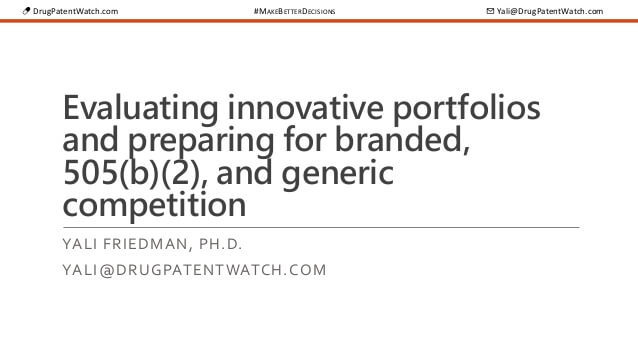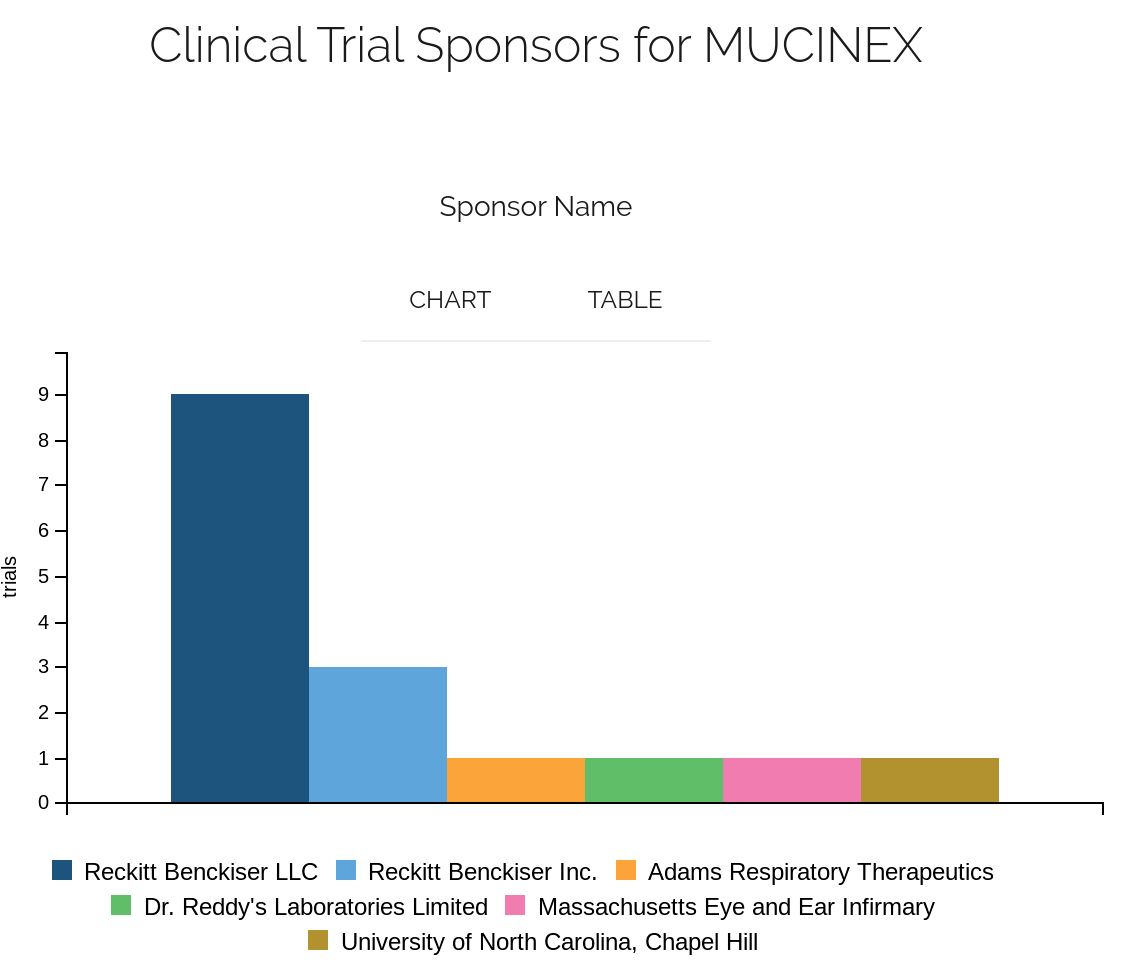Pharmaceutical life cycle management (LCM) has transformed from a tactical afterthought to a core strategic imperative for drug manufacturers worldwide. Pharmaceutical companies face unprecedented challenges in maximizing product value amid shrinking R&D pipelines, increasing development costs, and evolving regulatory landscapes. The strategic management of a drug’s lifecycle—from early development through market maturity and beyond—has become more crucial than ever for sustaining competitive advantage and ensuring long-term profitability in an increasingly complex industry.
Understanding the Fundamentals of Pharmaceutical Life Cycle Management
The Definition and Importance of LCM in Today’s Pharmaceutical Industry
Life Cycle Management in pharmaceuticals encompasses all strategies and activities designed to maximize a drug’s value throughout its commercial lifetime. Far more than simply extending patent protection, effective LCM involves a holistic approach to optimizing a product’s therapeutic and commercial potential from early development through post-patent expiration phases. In today’s pharmaceutical landscape, the importance of sophisticated LCM cannot be overstated.
According to GBI Research, with shrinking Research and Development pipelines and mounting costs involved in drug development, implementing suitable Life Cycle Management strategies has become increasingly important for pharmaceutical companies seeking to maximize revenues and extend the lifespan of their portfolios1. The investment required to bring a new drug to market continues to rise exponentially, making it essential for companies to extract maximum value from each successful product.
Effective LCM enables pharmaceutical companies to adapt to changing market conditions, respond to emerging competitive threats, and capitalize on new opportunities as they arise. It allows organizations to strategically position their products throughout different stages of the product lifecycle, ensuring sustained revenue streams and continued patient access to important medications.
The Three Pillars of LCM: Developmental, Commercial, and Regulatory Strategies
Modern pharmaceutical LCM rests upon three fundamental pillars, each addressing different aspects of a product’s lifecycle and market position. These pillars—developmental, commercial, and regulatory/legal strategies—work synergistically to maximize a drug’s value proposition over time.
Developmental strategies focus primarily on enhancing a product’s clinical profile and expanding its approved indications. As noted by GBI Research analyst Priyatham Salimadugu, “Developmental LCM strategies focus on increasing the number of patients eligible to receive a drug, such as by expanding its usage for different indications or targeting rare diseases”1. These strategies typically involve additional clinical trials, new formulation development, and exploration of novel delivery systems to improve patient experience and compliance.
Commercial strategies, by contrast, aim to optimize product positioning, pricing, and promotional activities to maximize market uptake and value. These approaches work to expand a product’s uptake and perceived value among patients, healthcare providers, and payers1. Through sophisticated marketing, patient support programs, and strategic pricing models, commercial LCM strategies help maintain product relevance in increasingly crowded therapeutic categories.
Regulatory and legal strategies constitute the third pillar, focusing on maximizing market exclusivity periods and navigating complex global regulatory frameworks. These strategies leverage patent protections, regulatory exclusivity provisions, and other legal mechanisms to extend a product’s period of market protection from generic competition. According to research published in the Indian Journal of Pharmaceutical Education and Research, such strategies have significant effects on generic competition and market dynamics4.
The Changing Landscape of LCM in the Pharmaceutical Industry
Historical Approaches to LCM
Historically, pharmaceutical LCM often followed relatively predictable patterns, with companies focusing primarily on patent extensions, minor formulation changes, and traditional marketing approaches. The emphasis was frequently on maintaining market exclusivity through legal mechanisms rather than substantive product improvements or value demonstration.
Traditional LCM strategies from previous decades often centered around what industry critics termed “evergreening”—making incremental modifications to existing products primarily to extend patent protection. While legally sound, these approaches increasingly faced scrutiny from payers, regulators, and healthcare systems demanding greater evidence of improved patient outcomes to justify continued premium pricing.
The conventional pharmaceutical business model relied heavily on blockbuster drugs with broad market applications, with LCM serving primarily to extend these products’ commercial viability. However, this approach has become less sustainable in today’s more specialized therapeutic landscape.
Current Challenges Driving Evolution in LCM Strategies
Today’s pharmaceutical marketplace presents unprecedented challenges that are forcing evolution in LCM approaches. Rising R&D costs, increased regulatory scrutiny, empowered payers, and the growth of specialized medicine all demand more sophisticated lifecycle strategies.
The shift toward precision medicine has fundamentally altered the traditional blockbuster model, with companies increasingly developing specialized therapies for smaller patient populations. This trend necessitates more nuanced LCM approaches to ensure appropriate returns on investment despite the more limited patient base.
Additionally, healthcare systems worldwide increasingly demand evidence of real-world value and comparative effectiveness, not just clinical efficacy. This value-based healthcare movement has significant implications for LCM, requiring pharmaceutical companies to continuously generate compelling evidence of their products’ economic and humanistic benefits beyond basic clinical outcomes.
The Impact of Shrinking R&D Pipelines and Mounting Development Costs
Perhaps no factor has elevated the importance of effective LCM more than the dual challenges of shrinking R&D productivity and escalating development costs. With fewer new molecular entities being approved relative to R&D investment, and the cost of bringing a single drug to market now exceeding $2 billion in many cases, companies simply cannot rely on a steady stream of new products to drive growth.
This reality has transformed LCM from a supplementary activity to a core business imperative. As emphasized by GBI Research, “With shrinking Research and Development pipelines and mounting costs involved in drug development, it is becoming increasingly important for pharmaceutical companies to implement suitable Life Cycle Management strategies in order to maximize revenues and the lifespan of their portfolios”1.
Industry expert Priyatham Salimadugu further notes that successful LCM planning should commence early in a drug’s lifecycle, ideally during the R&D phase, with multiple factors such as timing, disease characteristics, and market environment influencing strategy selection1. This represents a significant evolution from historical approaches that often treated LCM as an end-of-lifecycle consideration.
Developmental LCM Strategies: Expanding Product Applications
Indication Expansion and Label Updates
One of the most powerful developmental LCM strategies involves expanding a product’s approved indications through additional clinical studies. By demonstrating efficacy in new disease states or patient populations, companies can substantially increase their product’s prescriber base and market potential.
Indication expansion offers multiple advantages beyond simply increasing potential patient numbers. New indications often reset market exclusivity periods for specific uses, can justify premium pricing in certain therapeutic areas, and may open access to previously restricted formularies or reimbursement pathways.
The process typically involves careful therapeutic area selection based on preclinical evidence, mechanistic rationale, or early clinical signals. Companies must balance the potential market opportunity against required investment in clinical trials, regulatory submission costs, and competitive landscape considerations in the target indication.
Formulation Improvements and New Delivery Systems
Developing improved formulations and novel delivery systems represents another cornerstone of developmental LCM strategies. These approaches can enhance patient convenience, improve adherence, reduce side effects, or enable new routes of administration—all potentially differentiating factors in competitive markets.
Extended-release formulations, for instance, can improve dosing convenience and patient compliance while potentially reducing side effects associated with peak plasma concentrations. Similarly, developing alternative administration routes (e.g., oral vs. injectable, transdermal vs. oral) can significantly enhance patient acceptance and expand market opportunities.
The Rise of Oral Biologics as an LCM Strategy
A particularly noteworthy trend in formulation-based LCM is the development of oral biologics. According to industry leaders in a recent Drug Development & Delivery Leadership Panel, “The rise of oral biologics, fueled by the desire for more convenient administration, marks a significant step towards patient-centric drug delivery”5.
This trend extends beyond mere convenience, as the panel notes: “This trend promises to enhance patient adherence and improve outcomes, particularly for chronic conditions like oral Insulin or oral therapies with innovative biologic compounds for Inflammatory Bowel Disease and Rheumatoid Arthritis, driving significant interest and investment”5.
The transformation of injectable biologics into oral formulations represents a sophisticated LCM strategy that can significantly extend a product’s commercial viability while genuinely improving the patient experience—a prime example of modern LCM that balances commercial objectives with meaningful clinical advancement.
Commercial LCM Strategies: Maximizing Market Value
Pricing and Reimbursement Optimization
In today’s complex healthcare financing environment, sophisticated pricing and reimbursement strategies have become essential components of effective LCM. These strategies must balance revenue optimization with market access considerations across diverse healthcare systems and payer types.
Value-based pricing models, outcomes-based contracts, and indication-specific pricing are increasingly deployed as part of comprehensive LCM approaches. These innovative arrangements help address payer concerns regarding value demonstration while potentially preserving premium pricing for indications or populations where a product demonstrates superior outcomes.
The timing of pricing adjustments throughout a product’s lifecycle has also evolved considerably. Rather than maintaining premium pricing until patent expiration followed by dramatic price erosion, many companies now implement more gradual pricing strategies that reflect changing market dynamics, competitive entries, and evolving value perceptions.
Brand Management and Patient Experience Enhancement
Beyond pricing considerations, comprehensive brand management has become increasingly sophisticated in pharmaceutical LCM. This encompasses everything from professional education and thought leader engagement to patient support programs and digital engagement strategies.
Modern LCM approaches recognize that maintaining brand relevance requires ongoing engagement with diverse stakeholders across multiple channels. Digital patient support programs, medication adherence applications, and virtual engagement platforms increasingly complement traditional promotional activities.
“The key to good LCM is not to manage a single product in isolation, but to think in terms of optimizing sales of the company’s entire portfolio, both marketed and R&D, through planning and learning across the organization.” – Priyatham Salimadugu, Analyst for GBI Research1
This portfolio perspective represents a significant evolution from product-centric approaches, recognizing that effective LCM requires consideration of how individual products complement and potentially compete with others in a company’s portfolio. This holistic view enables more strategic resource allocation and prevents counterproductive internal competition.
Regulatory and Legal LCM Strategies: Extending Exclusivity
Patent Strategies and IP Portfolio Management
Intellectual property protection remains a fundamental aspect of pharmaceutical LCM, though approaches have evolved considerably beyond basic primary patent extensions. Today’s sophisticated IP strategies involve building multilayered patent estates covering various aspects of a product, from composition of matter and manufacturing processes to specific formulations and methods of use.
The timing and territorial scope of patent filings have become increasingly strategic, with companies carefully sequencing global applications to maximize worldwide protection periods. Secondary patents on improved formulations, new delivery systems, or manufacturing innovations can extend protection beyond the original compound patents when strategically developed and filed.
Patent litigation strategies have similarly evolved, with companies increasingly employing creative approaches to defending their intellectual property while challenging competitors’ patents when appropriate. These legal strategies must be fully integrated with broader LCM planning to ensure alignment with commercial and developmental initiatives.
Regulatory Exclusivity Provisions and Their Strategic Utilization
Beyond patent protection, various regulatory exclusivity mechanisms have become increasingly important components of pharmaceutical LCM. These provisions, which vary by jurisdiction, provide additional market protection independent of patent status.
In the United States, for example, exclusivity periods for orphan drugs, pediatric indications, and new chemical entities provide powerful LCM opportunities when strategically leveraged. Similarly, data exclusivity periods in various global markets can significantly extend effective market protection when appropriately incorporated into global LCM planning.
A case study published in the Berkeley Technology Law Journal highlighted “the important role of accelerated regulatory approval mechanisms, regulatory exclusivity, and shortened clinical trial processes” in successful commercialization of breakthrough therapies6. These regulatory provisions, when strategically incorporated into comprehensive LCM planning, can significantly extend a product’s effective market exclusivity and commercial viability.
The Integration of Technology in Modern LCM Approaches
AI and Machine Learning in Life Cycle Management
Artificial intelligence and machine learning are rapidly transforming pharmaceutical LCM, enabling more data-driven decision-making and revealing previously unidentified opportunities. These technologies are being applied across the LCM spectrum, from early development strategy through late-stage commercialization.
According to IQVIA, “AI is transforming pharmacovigilance, medical information, and lifecycle management in the pharmaceutical industry”2. The application of these technologies helps companies “manage growing workloads” and adapt to changing stakeholder demands and increasing cost constraints2.
In safety monitoring, for instance, AI-powered pharmacovigilance systems can process vast quantities of real-world data to identify potential safety signals earlier and more accurately than traditional approaches. This capability not only enhances patient safety but also provides valuable insights for LCM planning around potential label updates or risk mitigation strategies.
Data Analytics for Market Intelligence and Decision-Making
Beyond AI-specific applications, advanced data analytics more broadly has become essential to modern LCM. Sophisticated analysis of prescription patterns, patient demographics, payer policies, and competitive activities provides crucial insights for LCM strategy development and refinement.
IQVIA notes that it will be “important to stay diligent and adaptive to technological trends to ensure continued market success and proper lifecycle management for your product”2. The integration of analytics-driven offerings has become essential for meeting “the challenge of changing stakeholder demands and increasing cost constraints”2.
Real-world evidence generation, facilitated by advanced analytics platforms, has become particularly important in demonstrating product value throughout the lifecycle. These data complement traditional clinical trial results by providing insights into real-world effectiveness, safety profiles in diverse populations, and economic outcomes—all critical inputs for value-based discussions with payers and health systems.
LCM Strategies for Specialized Pharmaceutical Products
Life Cycle Management for Biologics and Biosimilars
Biological products present unique LCM challenges and opportunities compared to small-molecule drugs. Their complexity, manufacturing considerations, and distinct regulatory pathways necessitate specialized LCM approaches that account for these differences.
According to industry experts on LinkedIn, “LCM involves a multifaceted approach aimed at maximizing the therapeutic and commercial potential of these biologics. LCM strategies in the pharma industry are essential for maximizing the value and longevity of drug products”3. The post further emphasizes that “By leveraging a combination of regulatory, clinical, commercial, and IP strategies, pharma companies can sustain the competitive advantage of their products, extend market exclusivity, and help in retaining the market shares”3.
For originator biologics, manufacturing process improvements can provide substantial LCM opportunities, potentially yielding cost reductions, capacity increases, or quality enhancements that strengthen competitive positioning. Device and delivery system innovations are also particularly important for injectable biologics, where administration convenience significantly impacts patient preference and market adoption.
LCM Considerations for High Potency APIs and Advanced Therapeutics
Highly potent active pharmaceutical ingredients (HPAPIs) and advanced therapeutics such as cell and gene therapies present distinct LCM considerations that are increasingly important in today’s pharmaceutical landscape. Industry leaders predict these specialized product categories will significantly impact drug development.
According to the Drug Development & Delivery Leadership Panel, “The increasing prevalence of HPAPIs necessitates specialized handling, expertise, and manufacturing capabilities. This trend reflects the industry’s focus on developing more targeted and effective therapies, often requiring smaller doses”5. For these products, manufacturing expertise and specialized handling capabilities become key differentiating factors that may be leveraged in LCM planning.
Cell and gene therapies present particularly novel LCM challenges, as many are positioned as potentially curative one-time treatments. The Leadership Panel notes that while 2024 saw reduced investment in cell and gene therapies, “there have been encouraging signs with recent announcements that we could be turning a corner”5. For these revolutionary therapies, LCM may focus more on expanding eligible patient populations, enhancing manufacturing efficiency, or developing complementary services rather than traditional lifecycle extension strategies.
Global Perspectives on Pharmaceutical LCM
Regional Variations in LCM Strategy Implementation
Effective global LCM requires nuanced understanding of regional market dynamics, regulatory frameworks, and healthcare system structures. Strategies that prove highly effective in one region may face substantial challenges in others due to differing reimbursement mechanisms, cultural factors, or competitive landscapes.
In mature markets like the United States and Europe, sophisticated value demonstration and comparative effectiveness data increasingly drive LCM success. By contrast, emerging markets may prioritize access expansion strategies, local manufacturing partnerships, or public health collaborations as key LCM components.
Patent and regulatory exclusivity provisions also vary substantially across jurisdictions, necessitating carefully tailored IP strategies within global LCM planning. Companies must navigate these complex regional variations while maintaining overall strategic coherence and resource efficiency.
Adapting LCM Strategies for Emerging Markets
Emerging markets present both significant opportunities and unique challenges for pharmaceutical LCM. With rapidly growing healthcare expenditures and expanding middle-class populations, these markets offer substantial growth potential for products at various lifecycle stages.
The Indian pharmaceutical market provides an instructive example. According to research on the Indian pharmaceutical industry, “Globally, India is the largest manufacturer of generic drugs with a 20% global share, stands in 3rd place in production volume and 14th place by market value with a strong network of 4,538 registered pharma companies”4. This distinctive market structure necessitates tailored LCM approaches that account for the strong generic manufacturing presence and evolving regulatory landscape.
Successful LCM in emerging markets often involves modified pricing strategies, market-specific formulations or package sizes, local manufacturing partnerships, and educational initiatives addressing region-specific healthcare provider and patient needs. These adaptations must be incorporated into global LCM planning from early stages rather than as afterthoughts once primary markets mature.
The Future of Pharmaceutical Life Cycle Management
Predicted Trends
Several emerging trends are reshaping pharmaceutical LCM approaches and priorities. According to industry analyses, the year began with “a blend of cautious optimism and strategic urgency” across the pharmaceutical sector7.
Key trends likely to influence LCM strategies include:
- Increased integration of AI and advanced analytics in LCM decision-making and implementation
- Greater emphasis on value demonstration through real-world evidence generation
- More sophisticated approaches to patient engagement and experience enhancement
- Continued evolution of innovative pricing and market access models
- Growing importance of specialized manufacturing capabilities as competitive differentiators
Technological advancements will continue driving LCM innovation, with Pharma Manufacturing noting that “advancements in 3D printing, modular manufacturing, and AI-driven pharmacovigilance signal a shift toward more efficient and precise drug production”7. These manufacturing innovations provide new opportunities for product differentiation and lifecycle extension through improved production processes.
Regulatory trends will similarly influence LCM evolution, with Pharma Manufacturing predicting that “Simultaneous global submissions, streamlined safety reporting, and evolving compliance frameworks will redefine how drugs move from discovery to market”7. Companies able to effectively navigate these evolving regulatory pathways will gain significant advantages in LCM implementation.
The Evolution Toward Integrated Portfolio Management
Perhaps the most significant evolution in pharmaceutical LCM involves the shift from product-specific approaches toward integrated portfolio management strategies. This perspective aligns with GBI Research analyst Priyatham Salimadugu’s observation that “The key to good LCM is not to manage a single product in isolation, but to think in terms of optimizing sales of the company’s entire portfolio, both marketed and R&D, through planning and learning across the organization”1.
This integrated approach requires sophisticated coordination across functional areas, therapeutic franchises, and global regions—a significant organizational challenge for many pharmaceutical companies accustomed to more siloed product management structures. However, the competitive advantages of such integration are substantial, enabling more strategic resource allocation and minimizing counterproductive internal competition.
The evolution toward integrated portfolio management also facilitates more effective response to the changing healthcare landscape. As Salimadugu notes, “The changing industry and regulatory environment is impacting the effectiveness of LCM strategies themselves. As such, LCM strategy selection and implementation needs to be a dynamic and adaptive process, and having access to up-to-date market intelligence is a vital factor”1.
Measuring Success: KPIs for Effective Life Cycle Management
Evaluating LCM effectiveness requires thoughtfully developed key performance indicators (KPIs) that align with strategic objectives across the product lifecycle. These metrics must evolve as products progress through different lifecycle stages, with early-stage measures focusing on market penetration and adoption, while late-stage metrics may emphasize market share retention and profitability maintenance.
Financial metrics naturally play a central role in LCM evaluation, with net present value (NPV) impact, return on investment (ROI) for specific initiatives, and revenue trajectory relative to forecasted patent-expiry erosion serving as common quantitative measures. However, sophisticated LCM evaluation increasingly incorporates non-financial metrics as well.
Market access achievements, healthcare provider perception measures, patient experience indicators, and competitive positioning assessments provide crucial qualitative dimensions to LCM evaluation. These broader metrics help ensure that short-term financial optimization doesn’t undermine long-term brand equity or franchise potential.
Perhaps most importantly, effective LCM measurement systems incorporate feedback mechanisms that enable continual strategy refinement based on real-world results. As industry expert Salimadugu emphasizes, LCM implementation “needs to be a dynamic and adaptive process”1 responsive to evolving market conditions and emerging opportunities.
Key Takeaways
The evolution of pharmaceutical life cycle management reflects broader industry transformations toward more patient-centric, value-driven, and technologically sophisticated approaches. Key insights from this analysis include:
- LCM has evolved from primarily patent-focused tactics to comprehensive strategies encompassing developmental, commercial, and regulatory dimensions
- Successful LCM increasingly requires early planning, ideally beginning during the R&D phase
- Integration of AI and advanced analytics is transforming LCM decision-making and implementation
- Specialized therapeutic categories like biologics, HPAPIs, and advanced therapies necessitate tailored LCM approaches
- Global LCM strategies must account for regional variations while maintaining overall strategic coherence
- The shift toward integrated portfolio management represents a significant evolution from product-centric approaches
- Effective LCM requires dynamic adaptation to changing market conditions and regulatory environments
- Measurement of LCM success increasingly incorporates both financial and non-financial metrics
As pharmaceutical companies navigate these evolving LCM dynamics, those able to implement sophisticated, integrated approaches aligned with broader healthcare trends will gain significant competitive advantages in maximizing product value throughout the lifecycle.
FAQs About Pharmaceutical Life Cycle Management Strategies
When should companies begin planning life cycle management strategies for a new drug?
LCM planning should ideally commence during the R&D phase, well before market launch. Early planning enables more strategic clinical development programs, thoughtful patent filing sequencing, and manufacturing process optimizations that can significantly enhance lifecycle value. As industry expert Priyatham Salimadugu notes, “successful LCM planning commences early in the life cycle of a drug, ideally during the R&D phase,” with multiple factors influencing optimal strategy selection1.
How is artificial intelligence changing pharmaceutical life cycle management?
AI is transforming pharmaceutical LCM across multiple dimensions, from enabling more sophisticated market analytics and forecasting to enhancing pharmacovigilance capabilities and identifying new indication opportunities. According to IQVIA, AI is now being implemented across “LCM, MI, and PV workflows to accommodate changing volumes and needs,” with experts projecting continued expansion of AI applications2. Companies leveraging these technologies gain advantages in decision-making speed, pattern recognition, and resource optimization throughout the product lifecycle.
What are the most effective LCM strategies for biological products?
Biological products benefit from multifaceted LCM approaches that leverage their unique characteristics. According to industry experts, effective biologics LCM typically involves “a combination of regulatory, clinical, commercial, and IP strategies” to “sustain the competitive advantage of their products, extend market exclusivity, and help in retaining the market shares”3. Specific strategies may include manufacturing process improvements, delivery device innovations, new formulation development (including potential oral delivery for traditionally injectable products), and indication expansion through additional clinical studies.
How do LCM strategies differ between established and emerging markets?
LCM approaches must be tailored to regional market dynamics, healthcare system structures, and regulatory frameworks. In established markets, sophisticated value demonstration, comparative effectiveness data, and innovative contracting models often drive LCM success. Emerging markets may require different approaches emphasizing access expansion, educational initiatives, local partnerships, and market-specific formulations or packaging. Successful global LCM integrates these regional considerations into coherent worldwide strategies while allowing appropriate local adaptation.
What metrics should companies use to evaluate LCM effectiveness?
Effective LCM evaluation requires balanced scorecards incorporating both financial and non-financial metrics. Key financial measures typically include NPV impact, initiative-specific ROI, and revenue trajectory relative to patent-expiry forecasts. These should be complemented by market access achievements, healthcare provider perception measures, patient experience indicators, and competitive positioning assessments. The specific metrics should evolve as products progress through lifecycle stages, with early-stage measures focusing on adoption and penetration, while late-stage metrics emphasize market share retention and profitability maintenance.
Sources Cited:
- GBI Research report on Life Cycle Management Strategies
- IQVIA blog on AI Trends in Pharma for 2025
- LinkedIn article on LCM Strategies in Pharma
- Indian Journal of Pharmaceutical Education and Research study on LCM strategies
- Drug Development & Delivery Leadership Panel on 2025 impact factors
- Berkeley Technology Law Journal Life Sciences Innovation Case Study Project
- Pharma Manufacturing 2025 predictions article























